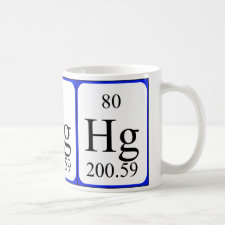
Authors: Sahu D, Sarkar N, Sahoo G, Mohapatra P, Swain SK
Article Title: Nano silver imprinted polyvinyl alcohol nanocomposite thin films for Hg2+ sensor.
Publication date: 2017
Journal: Sensors and Actuators B: Chemical
Volume: 246
Page numbers: 96-107.
DOI: 10.1016/j.snb.2017.01.038
Alternative URL: http://www.sciencedirect.com/science/article/pii/S092540051730045X
Abstract: Silver nanoparticle (Ag NP) imprinted sodium alginate (SA)/polyvinyl alcohol (PVA) nanocomposite thin films are fabricated using "one pot" synthetic protocol. Herein, sodium alginate is behaved as both, reducing and stabilizing agent during preparation of Ag NPs. The formation of Ag NPs is optimized through the variation of reaction temperature and confirmed by UV-vis spectroscopy. Transmission electron microscope (TEM) and Fourier transform infrared (FTIR) studies of nanocomposite thin films are performed to establish the microstructure and surface functionalities. Structural analysis of SA-Ag/PVA nanocomposite thin films is investigated carried out through by X-ray diffraction (XRD) study. As-prepared SA-Ag/PVA thin films are found to capable of detecting a very low concentration of Hg2+ in aqueous solution. The lower limit of detection (LOD) and limit of quantification (LOQ) of the SA-Ag/PVA nanocomposites thin film are found to be 0.9 ppb and 3.04 ppb respectively. This nanocomposite thin film shows a linear response for Hg2+ (aq) from 0.9 ppb to 1200 ppb. The decrease in intensity and blue shift in the surface plasmon resonance (SPR) band of imprinted Ag NPs is observed even at 2 min in the presence of mercury. Different analytical parameters, such as contact time, temperature and pH of the analyte medium are varied to investigate practicability of the sensor film. The SA-Ag/PVA nanocomposite thin film shows a good response to Hg2+ (aq) in pH 2.0-10. The interference of the other metal ions towards the detection of Hg2 + (aq) is found poor and therefore SA-Ag/PVA nanocomposites thin films can be assigned for the sensitive and selective detection of Hg2+ in aqueous phase
Template and target information: mercury ion, Hg(II)
Author keywords: sodium alginate, mercury, silver nanoparticle, Nanocomposite thin film



Join the Society for Molecular Imprinting

New items RSS feed
Sign-up for e-mail updates:
Choose between receiving an occasional newsletter or more frequent e-mail alerts.
Click here to go to the sign-up page.
Is your name elemental or peptidic? Enter your name and find out by clicking either of the buttons below!
Other products you may like:
 MIPdatabase
MIPdatabase









